The Physical Vapor Deposition Market is estimated to be valued at USD 25.58 Bn in 2025 and is expected to reach USD 39.52 Bn by 2032, exhibiting a compound annual growth rate (CAGR) of 6.4% from 2025 to 2032.
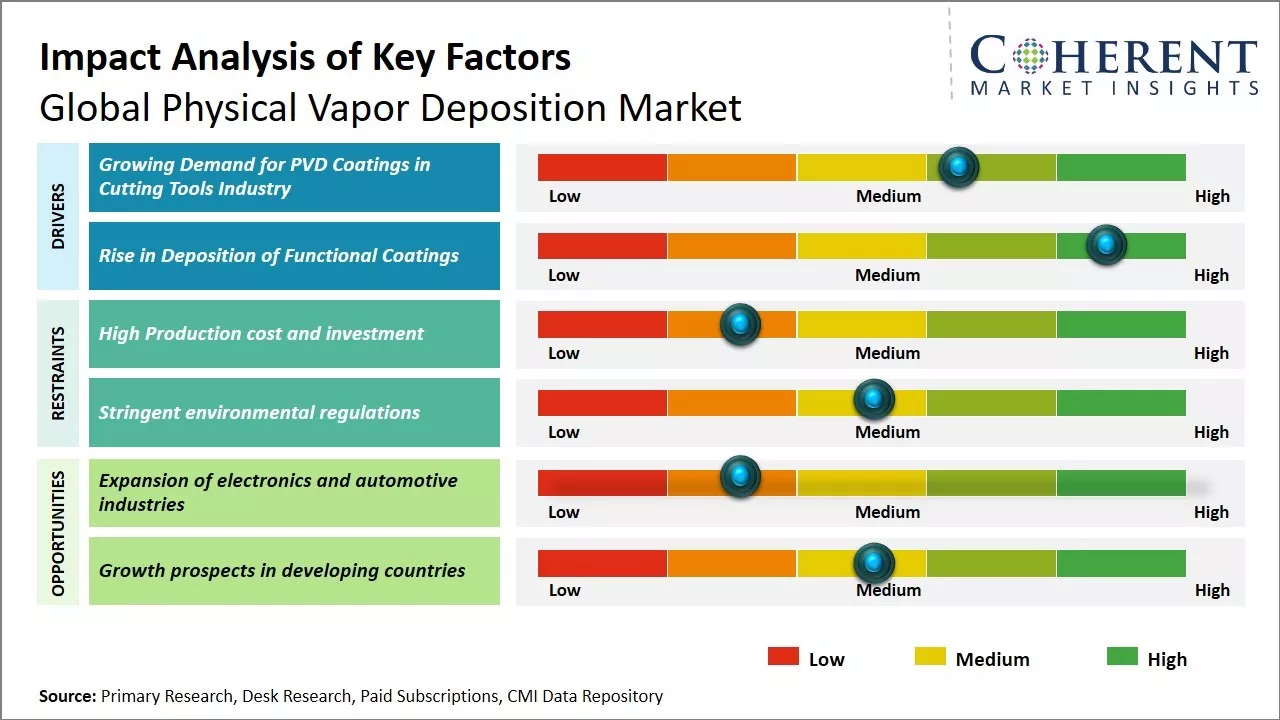
Discover market dynamics shaping the industry: Request sample copy
The market growth is driven by increasing demand for PVD coatings from various end-use industries such as microelectronics, data storage, cutting tools, solar products, and medical equipment. The trend in the Physical Vapor Deposition market involves growing demand for PVD functional coatings. Emerging applications in the healthcare and electronics industries will require advanced thin film coatings for their anti-microbial, anti-corrosive and low-friction properties. Advancements in substrate materials and refinement of PVD process parameters also contribute to the proliferation of these coatings across multiple applications.
Growing Demand for PVD Coatings in Cutting Tools Industry
The cutting tools industry has been one of the major end users of PVD coatings for many years now. PVD coatings help improve the performance of cutting tools manifold by increasing their hardness, wear resistance and high temperature resistance. This allows the tools to maintain sharp cutting edges for a longer period of time. As a result, they can be used for machining tougher alloy steels and other difficult-to-cut materials. The coating also reduces tool wear and increases the lifetime of the cutting tools. All this directly helps machine manufacturers and part producers to boost productivity and lower production costs through enhanced tool life and fewer Replacements. With the growing complexity in materials and tightening tolerances demanded in manufacturing, the need for tool coatings has increased tremendously. Modern day CNC machining requires tools that can withstand high cutting speeds and temperatures without failing prematurely. PVD coatings are increasingly becoming the coating of choice as they prove superior in high-precision machining of difficult alloys. Additionally, the automotive and aerospace industries, which are major consumers of precision machined components, are pushing for higher material removal rates through tool coatings. This has motivated cutting tool manufacturers to expand their PVD coated tool portfolio. The availability of multi-layer and alloy coatings tailored for specific applications has also augmented market growth. Overall, the critical role that PVD coatings play in tool performance enhances productivity is driving their increased use in the cutting tools segment.
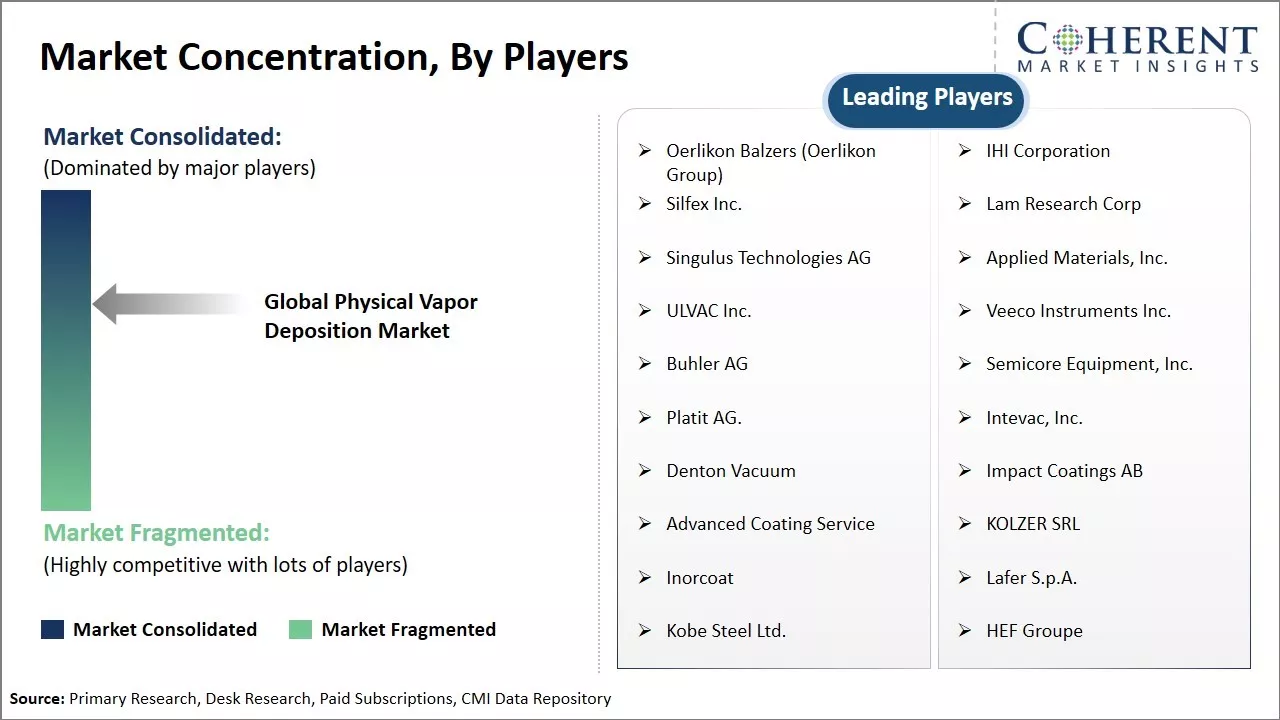
Get actionable strategies to beat competition: Request sample copy
Rise in Deposition of Functional CoatingsAlong with decorative and wear resistant applications, PVD technology is finding wider use in depositing functional coatings that impart special properties to surfaces. Spectacle lenses, medical devices, energy industry and electronics are key areas attracting functional PVD coatings. For instance, anti-reflective and anti-fog coatings are becoming standard on prescription eyeglasses to enhance vision quality. In the biomedical field, PVD’s ability to create biomimetic coatings of optimal biocompatibility, like titanium nitride, helps implants integrate better with the body. The energy sector leverages PVD for coating solar panels with anti-reflective, anti-soiling and self-cleaning layers to boost efficiency. Electronics is a major consumer as well, applying anti-smudge, anti-scratch coatings on devices.
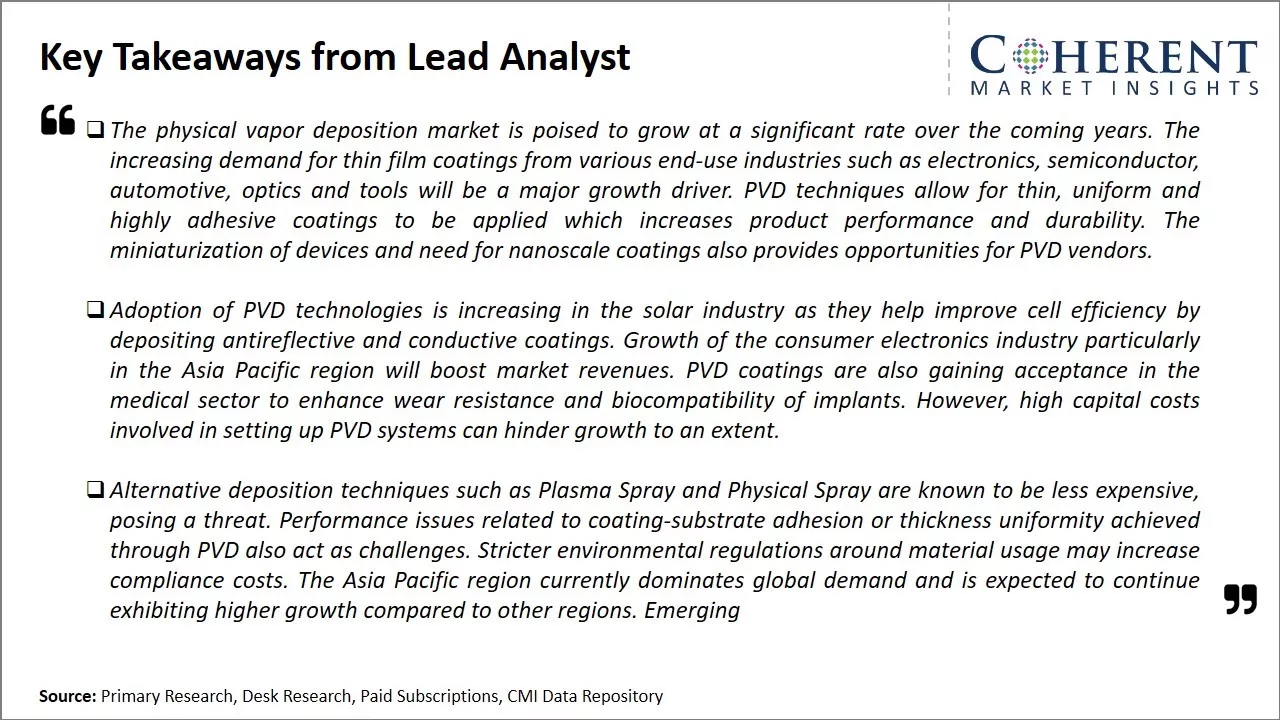
To learn more about this report, Request sample copy
Market Challenges: High Production Cost and InvestmentThe physical vapor deposition market faces several technological challenges. Producing thin uniform coatings on complex three-dimensional parts at an economical rate remains difficult. Additionally, scaling PVD systems for larger production volumes increases costs significantly. High capital investment requirements also pose a barrier for small manufacturers. Developing new materials that reduce substrate heating during deposition could help address throughput issues.
Market Opportunities: Expansion of electronics and automotive industries
The expanding electronics and automotive industries drive demand for PVD coated components. Adopting PVD coatings allows for value addition without major redesign of existing parts. Emerging applications in architectural, solar and medical industries further broaden the market scope. Innovation in combinatorial PVD-CMP processes as well as portable battery-powered systems also provide new avenues for expansion.
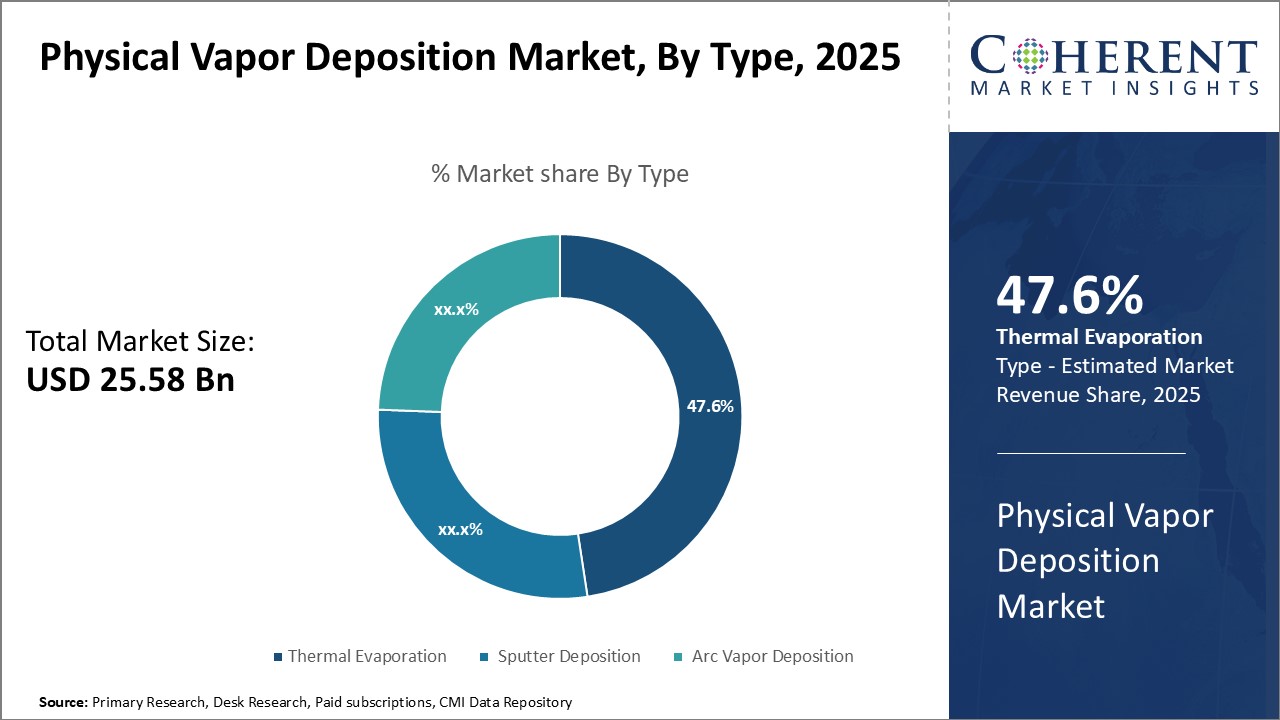
Discover high revenue pocket segments and roadmap to it: Request sample copy
Insights, By Type: diverse applications and ability to deposit a wide range of materials.
In terms of Type, Sputter Deposition contributes the 47.6% share of the market. Sputter deposition accounts for the largest share in the physical vapor deposition market owing to its widespread use for depositing a diverse range of materials across various industries such as microelectronics, optics, hard materials and others. This deposition technique utilizes high-energy particle bombardment to eject material from a target source which then deposits as a thin film on the substrate. Sputter deposition enables uniform coating of both simple and complex shaped objects and deposits a variety of materials including metals, alloys, ceramics and compounds. The ability of sputter deposition to coat a wide variety of substrate materials like plastics, glasses and composites while providing good step coverage and uniformity has boosted its demand across various application industries. It is heavily used in the microelectronics industry for applications such as manufacturing integrated circuits, chip packaging and interconnects owing to its capability of depositing thin, uniform and tightly adhesive films of metals like copper, aluminum and tantalum on silicon wafers and other substrates. In the storage industry as well, sputter deposition is widely adopted for manufacturing hard disks, optical media and memory cards due its effectiveness in depositing protective overcoats and reflective layers. Other industries such as optics and glass also utilize sputter deposition for applications involving optical coatings, dielectric layers and functional coatings where uniformity and adhesion are critical factors.
Insights, By Application: In terms of Application, Microelectronics holds the highest share of the market owing to continuous technology advancements
In terms of Application, Microelectronics contributes the 41.72% share of the market. The microelectronics segment account for the largest application area in the physical vapor deposition market owing to continuous technological advancements in the semiconductor industry and growing demand for smaller and more powerful devices. Physical vapor deposition techniques such as sputtering, evaporation and others are extensively used in various microelectronics manufacturing processes including device structuring, metallization and packaging. Advancements in areas such as Internet of Things (IoT), 5G technology, artificial intelligence (AI) and high-performance computing are driving semiconductor manufacturers to develop chips with smaller feature sizes, novel materials, new structures and increased functionality. This is significantly boosting the demand for PVD technologies which can deposit thin, uniform and tightly-bonded films of various metals, dielectrics and other materials that are critical for manufacturing next-generation semiconductor devices. PVD is indispensable for applications such as depositing barrier layers for prevention of diffusion, evaporating and sputtering conductive materials for interconnecting circuits and pathways and depositing insulators for chip passivation and insulation. With growing complexity of semiconductor devices, the microelectronics industry's reliance on PVD for critical deposition applications will continue to rise. The need for conformal and ultra-thin films, ability to deposit new materials and tighter process control are spurring the development of new PVD technologies optimized for microelectronics manufacturing. This will subsequently drive further growth in the usage of physical vapor deposition in the high-value microelectronics application segment. Growing investments semiconductor industry is expected to drive the market growth. For instance, in December 2023, Taiwan Semiconducting Manufacturing Co. announced an increase in its investments to enhance its manufacturing capacity in the U.S., signaling a shift in the geographic dynamics of the sector. Thus, the growing semiconductor industry globally is expected to drive product demand.
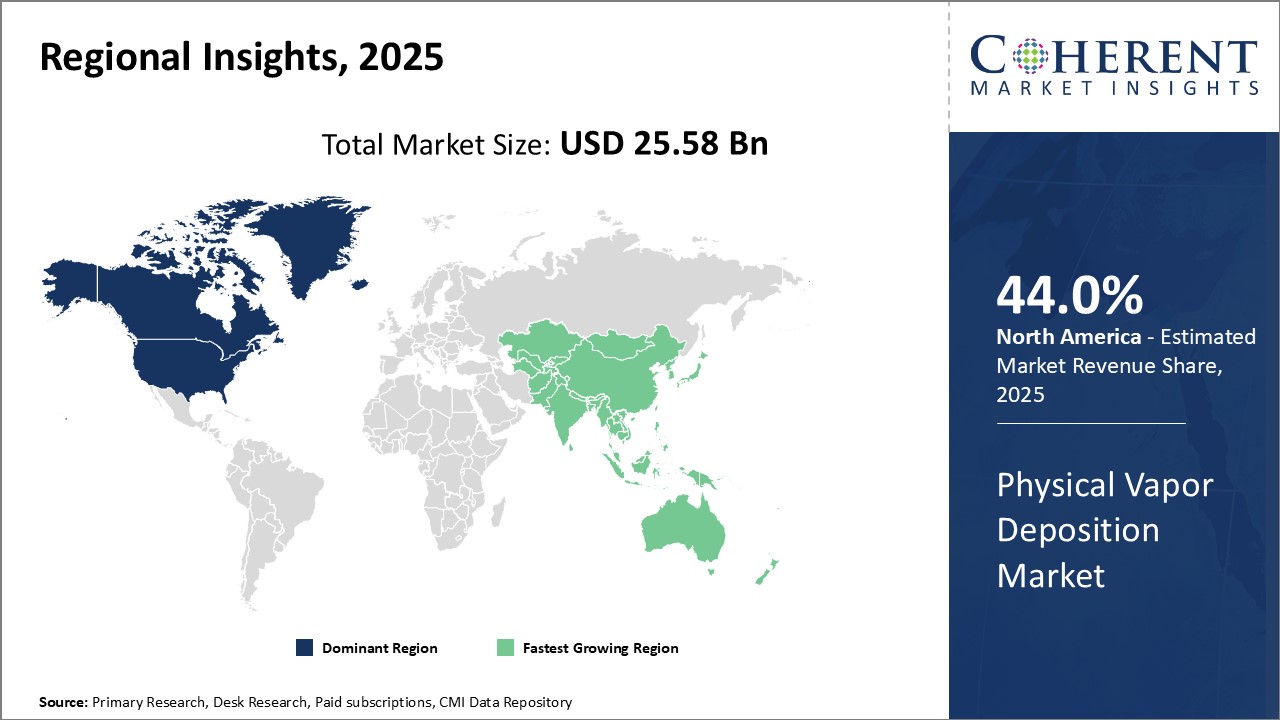
Need a Different Region or Segment? Customize now
North America has established itself as the dominant region in the global physical vapor deposition market with 44.0%. This can be attributed to strong manufacturing sectors in countries like the U.S. and Canada that rely heavily on PVD coating technologies. The automotive, electronics and medical device industries in North America are at the forefront of innovation and have been early adopters of PVD coatings. North America is also a leader in PVD equipment manufacturing with major companies headquartered in the region. This allows for greater accessibility of state-of-the-art deposition systems and continuous innovation. Additionally, the strong macroeconomic environment supports high research and development spending by both public and private players in North America. This focus on R&D ensures North America maintains its competitive edge with regard to newer PVD materials and applications.
Asia Pacific region is witnessing the fastest growth. Factors such as rising manufacturing capabilities, developing end-use industries and growing adoption rates are driving strong demand for PVD coatings in Asia Pacific. Countries like China, Japan, South Korea and Taiwan are industrial powerhouses with major manufacturing presence across electronics, automotive and other industries using PVD technologies. Rapid infrastructure development and industrialization coupled with increasing per capita incomes in developing Asian nations are also boosting consumption. Furthermore, Asia Pacific players have recognized the benefits of PVD coatings in extending product lifetimes and improving performance. This is evident from strategic investments and collaborations taking place between regional companies and global PVD vendors. With economies of scale and a push for newer applications, the Asia Pacific physical vapor deposition market is well positioned for continued high growth over the coming years.
Physical Vapor Deposition Market Report Coverage
| Report Coverage | Details | ||
|---|---|---|---|
| Base Year: | 2024 | Market Size in 2025: | USD 25.58 Bn |
| Historical Data for: | 2020 To 2024 | Forecast Period: | 2025 To 2032 |
| Forecast Period 2025 to 2032 CAGR: | 6.4% | 2032 Value Projection: | USD 39.52 Bn |
| Geographies covered: |
|
||
| Segments covered: |
|
||
| Companies covered: |
Oerlikon Balzers (Oerlikon Group), IHI Corporation, Silfex Inc., Lam Research Corp, Singulus Technologies AG, Applied Materials, Inc., ULVAC Inc., Veeco Instruments Inc., Buhler AG, Semicore Equipment, Inc., Platit AG., Intevac, Inc., Denton Vacuum, Impact Coatings AB, Advanced Coating Service, KOLZER SRL, Inorcoat, Lafer S.p.A., Kobe Steel Ltd., HEF Groupe |
||
| Growth Drivers: |
|
||
| Restraints & Challenges: |
|
||
Uncover macros and micros vetted on 75+ parameters: Get instant access to report
*Definition: The Physical Vapor Deposition Market involves the deposition of thin films using physical vapor deposition techniques, where the material from a solid or liquid source is deposited in vapor/condensable form onto a heated substrate surface or internal walls of a vacuum chamber in the presence of low-pressure gas or vapor environment. Physical Vapor Deposition methods include sputter deposition, thermal evaporation, and cathodic arc deposition which are used for depositing functional and decorative thin films for various industrial applications like microelectronics.
Share
Share
About Author
Yash Doshi is a Senior Management Consultant. He has 12+ years of experience in conducting research and handling consulting projects across verticals in APAC, EMEA, and the Americas.
He brings strong acumen in helping chemical companies navigate complex challenges and identify growth opportunities. He has deep expertise across the chemicals value chain, including commodity, specialty and fine chemicals, plastics and polymers, and petrochemicals. Yash is a sought-after speaker at industry conferences and contributes to various publications on topics related commodity, specialty and fine chemicals, plastics and polymers, and petrochemicals.
Missing comfort of reading report in your local language? Find your preferred language :
Transform your Strategy with Exclusive Trending Reports :
Frequently Asked Questions
Joining thousands of companies around the world committed to making the Excellent Business Solutions.
View All Our Clients
US Reciprocal Tax Impact Analysis On Physical Vapor Deposition Market
Stay updated on tariff changes with expert insights and timely information